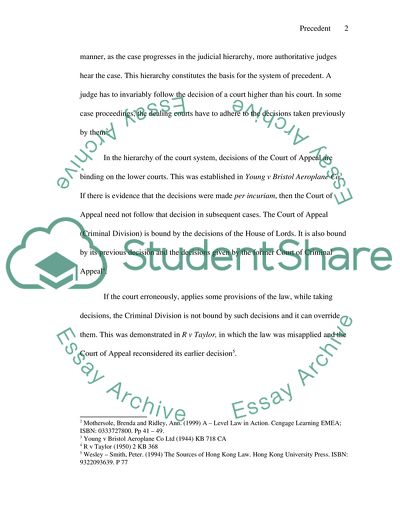Cite this document
(Dependence of the Doctrine of Precedent of the Courts Case Study - 1, n.d.)
Dependence of the Doctrine of Precedent of the Courts Case Study - 1. https://studentshare.org/law/1716031-using-case-law-and-considering-any-advantages-and-disadvantages-to-what-extent-does-the-doctrine-of-precedent-depend-on-the-hierarchy-of-the-courts
Dependence of the Doctrine of Precedent of the Courts Case Study - 1. https://studentshare.org/law/1716031-using-case-law-and-considering-any-advantages-and-disadvantages-to-what-extent-does-the-doctrine-of-precedent-depend-on-the-hierarchy-of-the-courts
(Dependence of the Doctrine of Precedent of the Courts Case Study - 1)
Dependence of the Doctrine of Precedent of the Courts Case Study - 1. https://studentshare.org/law/1716031-using-case-law-and-considering-any-advantages-and-disadvantages-to-what-extent-does-the-doctrine-of-precedent-depend-on-the-hierarchy-of-the-courts.
Dependence of the Doctrine of Precedent of the Courts Case Study - 1. https://studentshare.org/law/1716031-using-case-law-and-considering-any-advantages-and-disadvantages-to-what-extent-does-the-doctrine-of-precedent-depend-on-the-hierarchy-of-the-courts.
“Dependence of the Doctrine of Precedent of the Courts Case Study - 1”. https://studentshare.org/law/1716031-using-case-law-and-considering-any-advantages-and-disadvantages-to-what-extent-does-the-doctrine-of-precedent-depend-on-the-hierarchy-of-the-courts.


